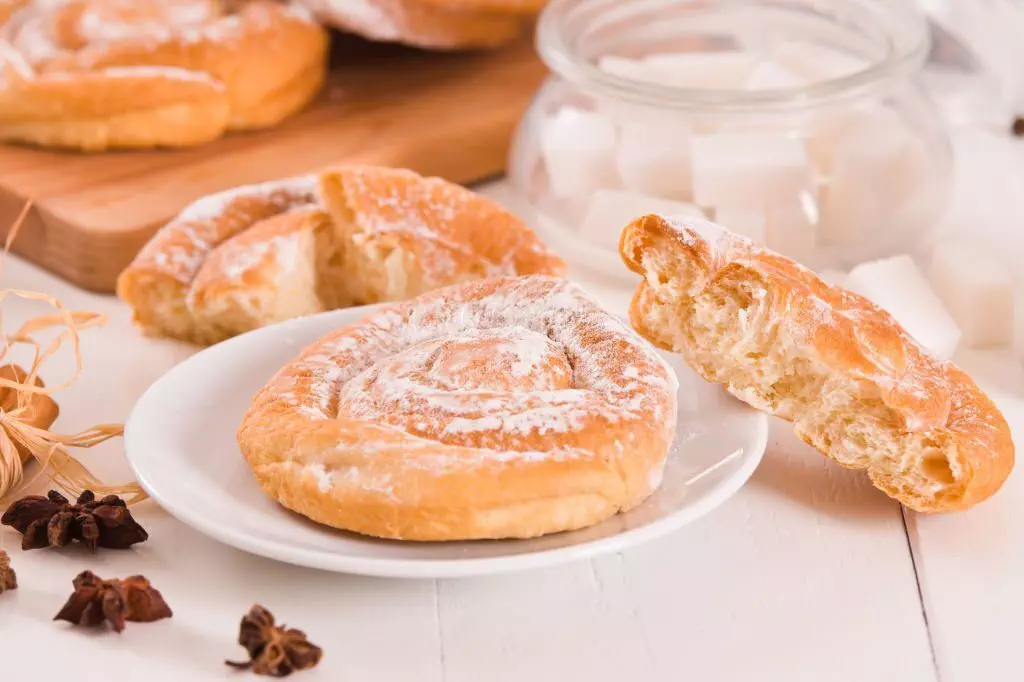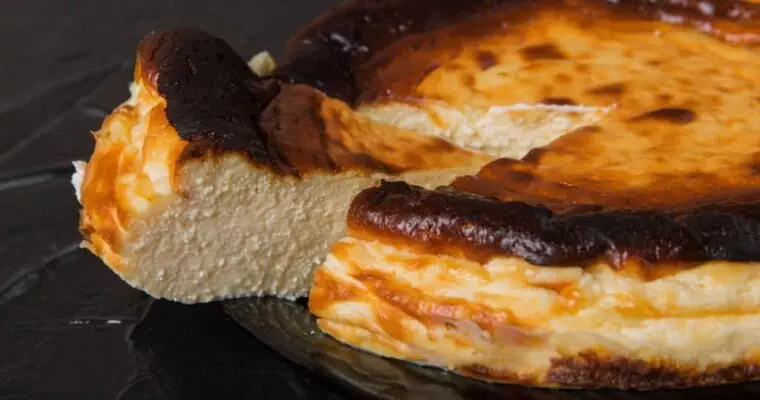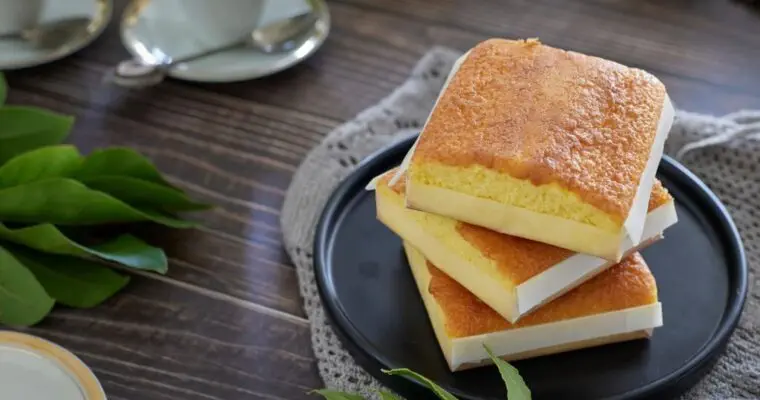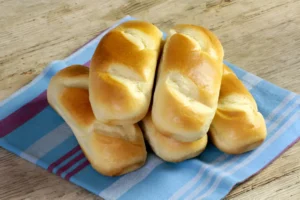A Taste of Ensaimada´s History
The ensaimada, a delightful spiral of dough, offers us a journey into the rich culinary landscape of traditional Spanish cuisine. This famous pastry, originating from the Spanish island of Mallorca, is more than just a treat. It’s a celebration of centuries-old baking techniques, a testament to the Spanish dedication to craftsmanship, and a delicious symbol of cultural heritage.
The ensaimada has a Jewish origin, deriving from bulemas, using lard instead of olive oil as a means of escaping the suspicions of the authorities during the Inquisition. The first written references to the Mallorcan ensaimada date back to the 17th century. At that time, although wheat flour was mainly used for making bread, there is evidence that this typical pastry product was made for festivals and celebrations.
The Art of Making Ensaimada
The ensaimada is made with strong flour, water, sugar, eggs, mother dough and a kind of reduced pork lard named saïm in Catalan, which gives the pastry its name. The handmade character of the product makes it difficult to give an exact formula. However, here are some tips and tricks to help you perfect your ensaimada-making skills:
- Yeast: Always proof your yeast before adding it to your dough. This ensures that your yeast is still active.
- Dough: The dough should be slightly sticky but smooth and elastic after about 10 minutes of kneading.
- Rise: Let your dough rise overnight at room temperature in a warm spot. The dough should double in size.
- Shape: Once the dough is fully coated with lard, start rolling it up lengthwise to create a long roll.
Variations of the Enchanting Ensaimada
Among the variants of ensaimada, the most common are: Llisa (literally “plain”) with no extra ingredient; Cabell d’àngel (literally “angel’s hair”), where the stringy orange strands found inside pumpkins are cooked with sugar to make a sweet filling that is rolled inside the dough.
In addition to these traditional variations, there’s also the Philippine variant which has evolved over the centuries and is perhaps one of the most common delicacies in the country. The localized pastry is a brioche baked with butter instead of lard and topped with grated cheese and sugar.
Sweet Breakfast Ideas
Ensaimada makes for an excellent sweet breakfast or dessert option. It can be enjoyed plain or filled with sweet cream or chocolate. Some even prefer it topped with apricot. Pair it with a hot cup of coffee or chocolate for an indulgent start to your day.
In conclusion, whether you’re looking for sweet breakfast ideas or simply want to try your hand at making puff pastry dough, ensaimada is definitely worth exploring. Its rich history and delicious taste make it one of the best breakfast options out there.
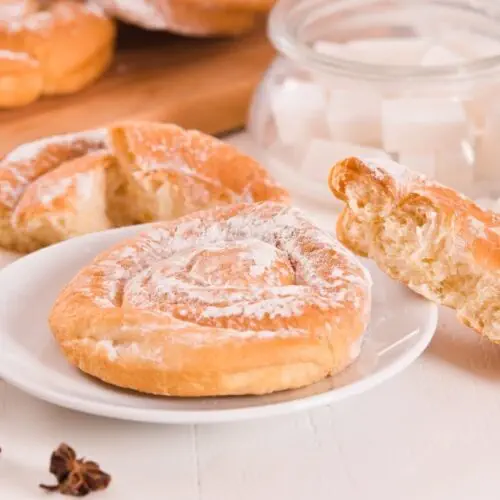
Ensaimada: A Sweet Breakfast Delight
Ingredients
For the Dough:
- 4 cups All purpose flour
- ⅔ cup Warm milk
- ¼ cup Granulatd sugar
- ¼ cup Unsalted butter melted
- 2 Large eggs
- 2 tsp Active dry yeast
- Zest of 1 lemon
- ½ tsp Salt
For the Filling:
- ½ cup Powdered sugar
- ½ cup Unsalted butter softened
- ¼ cup Grated cheese traditionally, a mild cheese like Mahón cheese is used (Optional)
- ¼ cup Raisins (Optional)
For the Topping:
- Powdered sugar for dusting
Instructions
- In a small bowl, combine the warm milk and yeast. Let it sit for about 10 minutes or until it becomes frothy.
- In a large mixing bowl, combine the flour, granulated sugar, lemon or orange zest, and salt.
- Make a well in the center of the dry ingredients and pour in the yeast mixture, melted butter, and eggs. Mix until a dough forms.
- Knead the dough on a floured surface for about 10 minutes until it's smooth and elastic. You may need to add a bit more flour if the dough is too sticky.
- Place the dough in a greased bowl, cover it with a clean kitchen towel or plastic wrap, and let it rise in a warm, draft-free place for about 1-2 hours or until it has doubled in size.
- Once the dough has risen, punch it down to release the air.
- Divide the dough into small portions and roll each portion into a ball.
- Roll out each ball of dough into a thin oval or rectangle.
- Spread a generous amount of softened butter over the surface of the dough.
- If desired, sprinkle grated cheese and raisins over the buttered dough.
- Roll up the dough tightly into a log or cylinder shape.
- Coil the dough into a spiral shape, tucking the loose end underneath.
- Place the ensaïmada onto a parchment-lined baking sheet.
- Repeat this process with the remaining dough portions.
- Allow the ensaïmadas to rise for another 30 minutes.
- Preheat your oven to 350°F (175°C).
- Bake the ensaïmadas in the preheated oven for 15-20 minutes or until they are golden brown.
- Remove the ensaïmadas from the oven and let them cool slightly.
- Dust the top of each ensaïmada with powdered sugar before serving.

